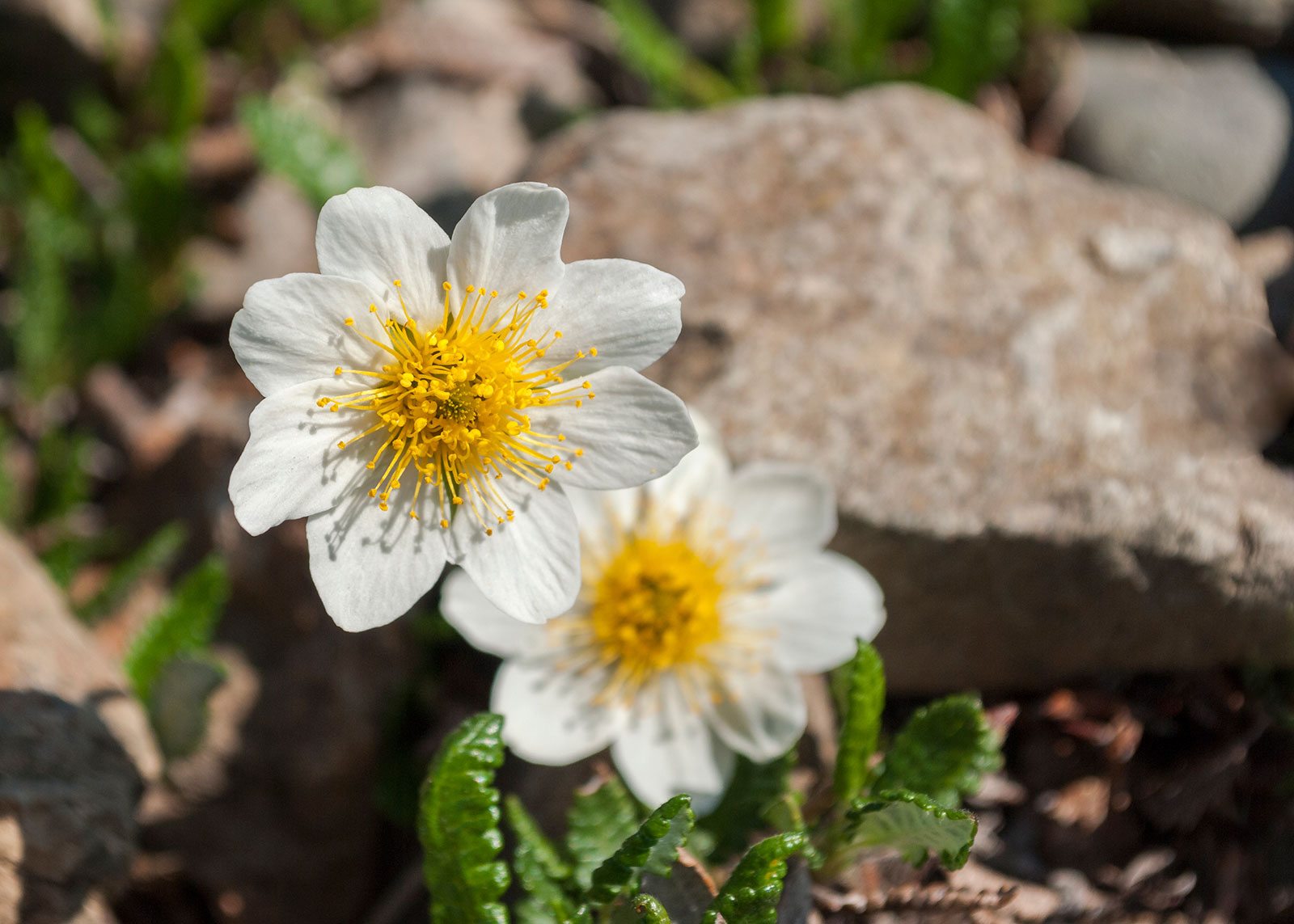Mountain Aven Flowers: Learn About Mountain Aven Growing Conditions


What is a mountain aven? Also known as alpine dryad or arctic dryad, mountain aven plants (Dryas integrifolia/octopetala) are ground-hugging, blooming plants that thrive in cold, sunny, mountainous locations. The plant is primarily found in alpine meadows and rocky, barren ridges. This little wildflower grows in the western United States and Canada. Mountain aven flowers are found in the Cascade and Rocky Mountains and are common as far north as Alaska, the Yukon, and the Northwest Territories. Mountain aven is also the national flower of Iceland.
Mountain Aven Facts
Mountain avens consist of low-growing, mat-forming plants with small, leathery leaves. They root at nodes along the creeping stems, which makes these little plants valuable members of the ecosystem for their ability to stabilize loose, gravelly mountain slopes. This charming little plant is distinguished by small, eight-petalled blooms with yellow centers. Mountain aven plants are not at risk, probably because they grow in punishing climates visited primarily by the most intrepid hikers and mountaineers. Unlike many other wildflowers, mountain aven flowers are not threatened by urban development and habitat destruction.
Mountain Aven Growing
Mountain aven plants are suitable for the home garden, but only if you live in a chilly region. Don’t waste your time if you live in a warm, humid climate, as mountain avens are suitable for growing only in the cool northern climes of USDA plant hardiness zones 3 through 6. If you live north of zone 6, mountain aven plants are relatively easy to grow in well-drained, gritty, alkaline soil. Full sunlight is a must; mountain aven won’t tolerate shade. Mountain aven seeds require stratification, and the seeds should be planted in pots in a sheltered outdoor location or cold frame as soon as possible. Germination may take anywhere from a month to a year, depending on growing conditions. Plant the seedlings in individual pots as soon as they are large enough to handle, then let the plants spend their first winter in a greenhouse environment before planting them in their permanent home.
Sign up for the Gardening Know How newsletter today and receive a free copy of our e-book "How to Grow Delicious Tomatoes".

A Credentialed Garden Writer, Mary H. Dyer was with Gardening Know How in the very beginning, publishing articles as early as 2007.